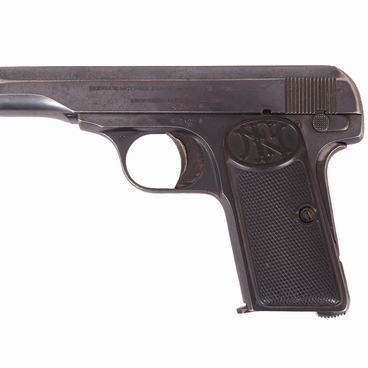In the early 20th century, only Guards cuirassiers and lancers, as well as mounted Cossack regiments carried pikes. At that time, there was a debate in the country between those who advocated for a widespread introduction of pikes in mounted units and those who opposed it. The former prevailed.
Apparently, the use of pikes in the German army, where the entire cavalry was armed with them, played a role in the decision. A new pike model with some changes and improvements was eventually borrowed from Germany. In December 1909, a detailed proposal was received for the manufacture of a pike with a metal shaft and a spearhead similar to the Cossack one of the 1901 model. It was this variant that was eventually adopted as a cavalry 1910 model pike.
The 1910 model pike was coated with enamel camouflage paint and consisted of a steel tube, a spear, a spearhead, a foot ring and two mounts for it, a strap with a bracket and a hemp sleeve. The total length of the pike was 327.6 cm, the length of the spear was 182.2 cm, and the total weight was about 2.5 kg.
The spear was made of steel with two blades and fullers. The tip was made of iron, its lower end was rounded, and the upper part was sharpened. It was inserted into the steel tube and attached with two rivets. To attach the foot loop, two mounts were secured with rivets in the lower part of the pike. The foot ring was a blackened rawhide loop, into which the soldier could slip his foot.
The strap served to hold the pike over the shoulder and consisted of a blackened Russian-leather belt. A rawhide cord was sewn to the strap for fastening the pike when shooting on horseback. The strap was attached to the pike at the height of the rider’s shoulder. To protect the rider’s hand from contact with metal during frosts, a hemp sleeve was put on the pike in its middle part. The spear was made of cast steel, while the tip was made of mild steel. The steel rod of the pike was made of a steel seamless tube.
The Guards cuirassiers and other cavalry and
mounted Cossack units were armed with the 1910 model pike. Their manufacture
was established at the Sestroretsk Arms Factory. Only privates of the first
columns in the formation were armed with pikes, which amounted to 64 pikes per
squadron (16 pikes per platoon). In addition, another 20 pikes per squadron
were issued for training purposes.


